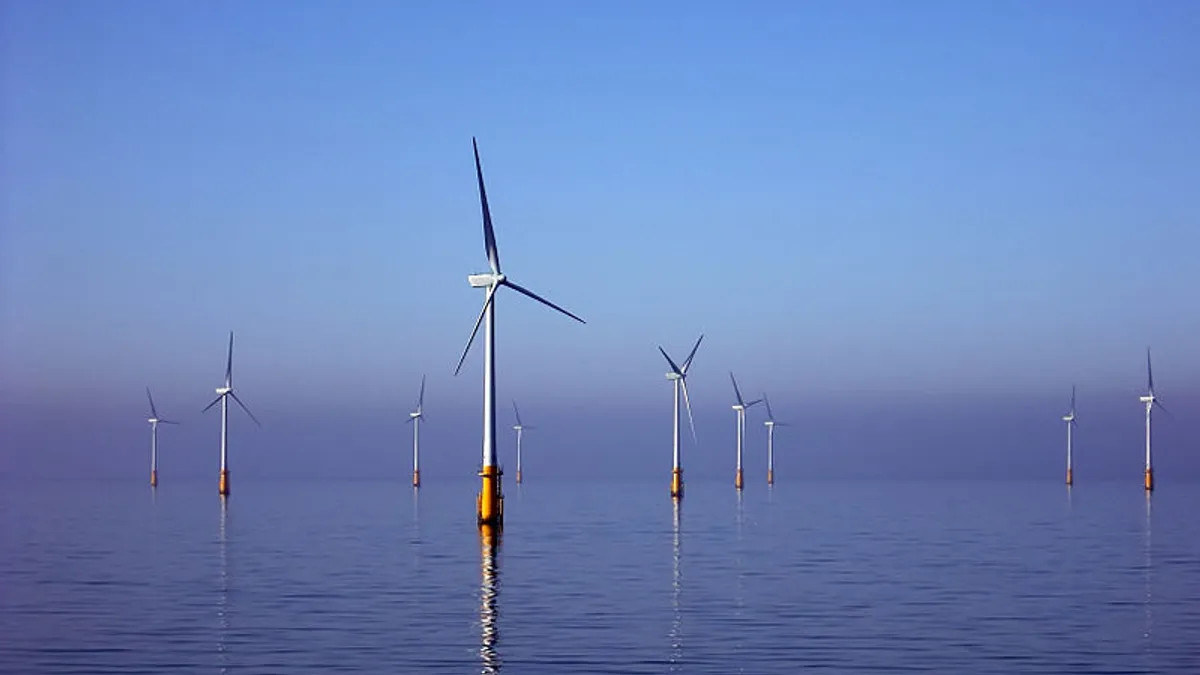Dive Brief:
- New Jersey Governor Phil Murphy, D, issued an executive order Tuesday raising the state's target for offshore wind energy capacity from 3.5 GW by 2030 to 7.5 GW by 2035.
- The state now has the second largest such goal in the nation and is part of a handful of states, including Maryland, Massachusetts and New York that also have multi-gigawatt offshore wind energy targets.
- The state's Board of Public Utilities awarded Ørsted with a contract in June to build a 1.1 GW offshore wind facility, the largest U.S. project to date, and developed a timeline for two 1.2 GW solicitations, one in 2020, the other in 2022.
Dive Insight:
Phil Murphy began his tenure as New Jersey's governor in January 2018 with a clean energy push and his ambitions continue to grow. At the same time, the cost of offshore wind in the U.S. is expected to keep falling as more developers can take advantage of economies of scale from the large solicitations, local supply chains are established, and equipment prices continue to decline.
"When we reach our goal of 7,500 megawatts, New Jersey’s offshore wind infrastructure will generate electricity to power more than 3.2 million homes and meet 50% of our state’s electric power need," Murphy said in a statement on Tuesday.
"We have an immense opportunity to maximize our potential and make this region — and, specifically New Jersey — the nexus of the global offshore wind industry," the statement continued.
Murphy's order directs state agencies with responsibilities under the Offshore Wind Economic Development Act "to take all necessary actions to promote the development of wind energy off the coast of New Jersey" to meet the new target.
Monday's announcement notes multiple steps the state has taken to become an offshore wind nexus, including:
- Adopting the Offshore Wind Energy Certificate funding rule, which established how an offshore wind program is funded and how project revenues go back to rate payers;
- Creating an Offshore Wind Tax Credit Program and the Offshore Wind Supply Chain Registry;
- Establishing the Council for the Wind Innovation and New Development Institute "to develop a plan for the creation of a hub for the offshore wind industry;" and
- Starting an Offshore Wind Technical Assistance Program to support local companies and develop relevant skills.
While praising Murphy's actions, Sierra Club New Jersey Chapter Director Jeff Tittel noted "there are still over a dozen fossil fuel projects that are looking to move forward" in the state.
"We need to move forward on wind energy, but we can’t get there if there are over a dozen fossil fuel projects. That is why we need Governor Murphy to put a moratorium on fossil fuel projects so that we can regulate and reduce C02 and move forward with renewable energy," Tittel said in a statement.
The state enacted legislation in 2018 setting a goal of 50% renewable energy by 2030 and Murphy issued an executive order that same year directing state agencies to develop an updated Energy Master Plan outlining a path to 100% clean energy by 2050.














